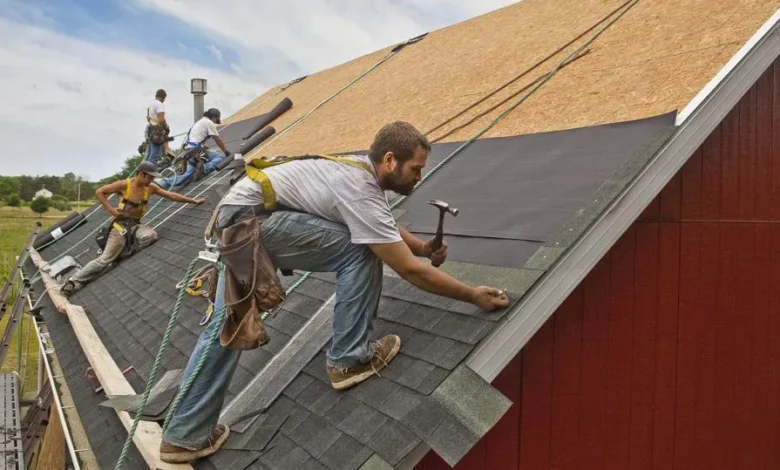Signs of the Times When to Consider Roof Replacement

The roof over your head does more than just keep you dry; it’s a critical component of your home’s structure and overall well-being. However, like everything, it has a lifespan. Recognizing when it’s time to replace your roof is crucial to maintaining your home’s integrity and your family’s safety. Here’s a guide to understanding the signs that your roof may need replacing and how to approach this significant home improvement project omgblog.
If you notice any concerning signs or are unsure about the condition of your roof, seeking professional advice is essential. Expert roofers, such as those at https://www.horchroofing.com/ can assess the state of your roof and provide guidance on whether repair or replacement is the best course of action. With their experience and commitment to quality, they can ensure that your home remains secure and well-protected for years to come.
Age Matters: Knowing Your Roof’s Life Expectancy
Most roofs have a predictable lifespan. Asphalt shingle roofs typically last 20-25 years, while materials like metal or tile can last much longer. If your roof is approaching or has surpassed its expected lifespan, it might be time to consider a replacement. Recognizing the signs of an aging roof is crucial for timely action. To assess the condition of your roof and explore replacement options, consider consulting professionals at https://nulookhomedesign.com/. Their expertise can guide you through the process, ensuring that your new roof not only enhances the aesthetic appeal of your home but also provides long-lasting protection for years to come.
Visual Inspections: The First Line of Defense
Regular visual inspections can reveal a lot about the state of your roof. Look for signs of wear and tear, such as cracked, curling, or missing shingles. Indoors, check your attic for daylight coming through the roof boards or stains and streaks indicating water damage.
Sagging and Structural Issues: Signs of Serious Trouble
A sagging roof is a clear indicator of structural issues. It could be a sign of a weakened decking in the attic or even foundational problems. If your roof appears to be sagging, it’s time to call in a professional immediately.
Leaks and Water Damage: The Silent Destroyers
Water is a roof’s worst enemy. Signs of leaks, water damage, or mold in your attic or on your ceilings are clear indicators that your roof may be failing. Even small leaks can lead to big problems, so don’t ignore these signs.
Granules in the Gutter: A Subtle Hint
If you have asphalt shingles, look in your gutters for granules. Roofs tend to lose more granules toward the end of their life cycle. A large amount of granules in the gutters is a sign that your shingles are wearing out.
Rising Energy Bills: An Unexpected Indicator
If you’ve noticed a sudden increase in your energy bills, your roof might be the culprit. A failing roof can lead to poor insulation and ventilation, causing your heating and cooling systems to work overtime.
Professional Evaluation: The Expert Opinion
Sometimes, the signs aren’t so obvious. Having your roof inspected by a professional can give you a clear idea of its condition. They can spot potential problems you might miss and provide an expert opinion on whether a repair or replacement is needed.
Understanding the Impact: The Benefits of Replacement
Replacing your roof is not just about avoiding problems; it’s also an opportunity to improve your home’s efficiency, safety, and curb appeal. New roofing materials can provide better insulation, reflect more sunlight, and even increase your property value.
Making the Decision: Balancing Cost and Benefit
Roof replacement is a significant investment. Consider not just the immediate cost but also the long-term savings in energy bills, repairs, and peace of mind. Sometimes, investing in a new roof can be more cost-effective than paying for ongoing repairs.
Fun Facts: Roofing Through History
Thatch roofs, made from straw or reeds, have been used for thousands of years and are still in use today. They’re not just quaint; a well-maintained thatch roof can last 50-60 years!
Choosing the Right Materials: A Future-Proof Investment
If you decide to replace your roof, consider your material options carefully. Think not just about aesthetics but also about durability, maintenance, and climate suitability. The right material can greatly extend the life of your new roof.
Final Thoughts: A Roof Over the Future
Your roof is an essential part of your home, and deciding to replace it is a significant decision. By understanding the signs of wear and the benefits of replacement, you can make an informed choice that ensures the safety, efficiency, and beauty of your home for years to come. Remember, a new roof isn’t just a replacement; it’s an upgrade for your home’s future.





